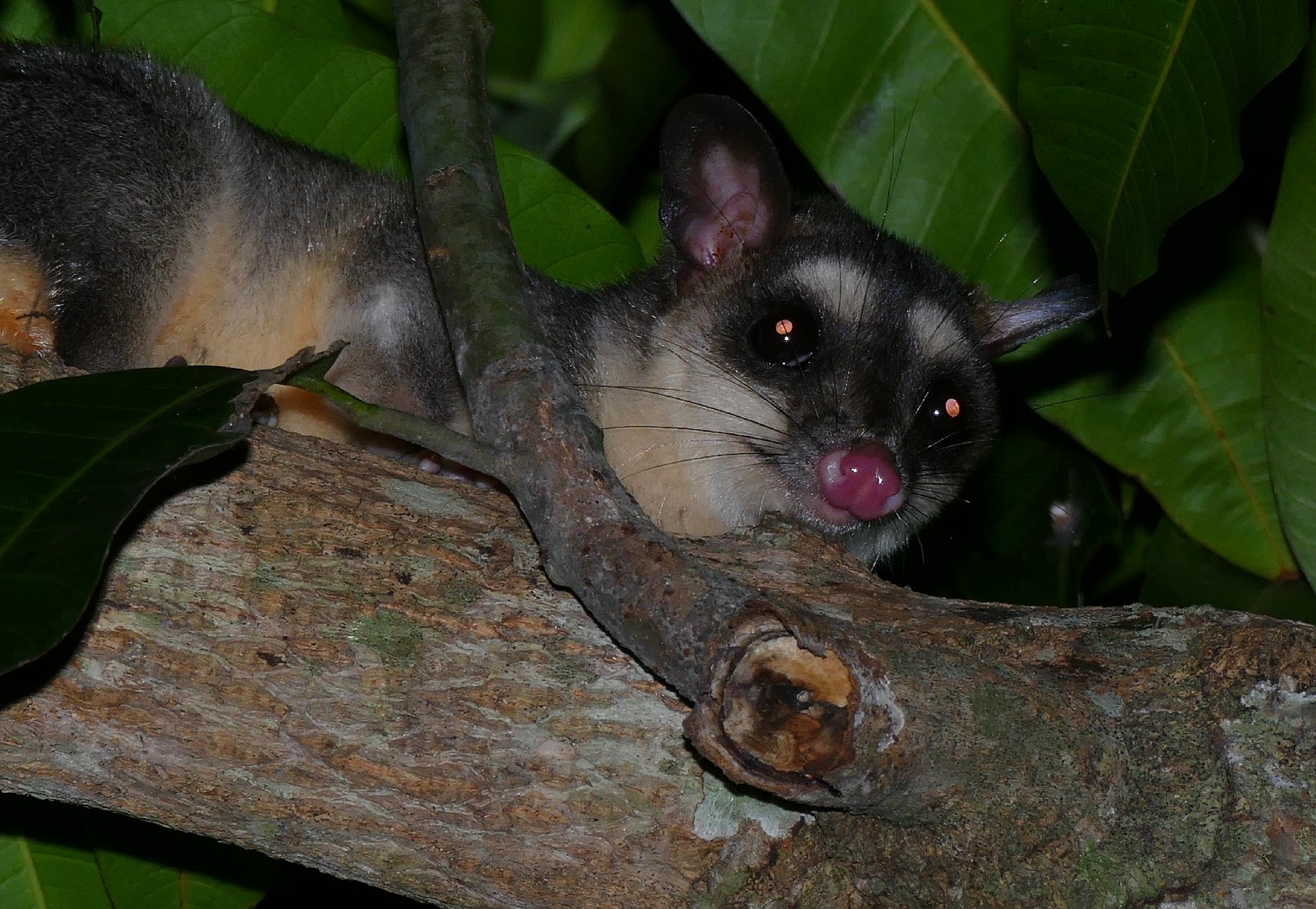Gray four-eyed opossum
A species of Gray and black four-eyed opossums Scientific name : Philander opossum Genus : Gray and black four-eyed opossums
Gray four-eyed opossum, A species of Gray and black four-eyed opossums
Scientific name: Philander opossum
Genus: Gray and black four-eyed opossums
Content
Description General Info
 Photo By Bernard DUPONT , used under CC-BY-SA-2.0 /Cropped and compressed from original
Photo By Bernard DUPONT , used under CC-BY-SA-2.0 /Cropped and compressed from original Description
It has a sharply defined white spot above each eye, hence the common name. Its prehensile tail is bicolored, with a pale distal part and a longer proximal darker gray part, and is naked at the end. Its dorsal fur is gray, while its ventral fur, throat, and cheeks are cream-colored. Adults have ears that are black except at the base. Wild specimens weigh 200–674 grams (7.1–23.8 oz), while captive specimens can weigh up to 1.5 kilograms (3.3 lb). Body length ranges from 22.0 to 33.1 centimetres (8.7 to 13.0 in) with a tail in a similar size range, 19.5 to 35.5 centimetres (7.7 to 14.0 in). 
General Info
Lifespan
3-4 years
Diet
Gray four-eyed opossum primarily consumes small fruits, along with insects and small vertebrates. This opportunistic feeder exhibits an innate preference for beetles and soft-shelled insects, yet can adapt its diet based on available resources.
Appearance
Gray four-eyed opossum is a small to medium-sized marsupial with a robust body, a pointed snout, and a notably prehensile, furless tail. Its fur is dense and predominantly dark gray, often with white or yellowish spots. Adult males may exhibit a dark mid-dorsal streak. It has no horns or wings but does exhibit sharp clawed paws for climbing and foraging. Sexual dimorphism is apparent with males being generally larger and having broader heads than females.
Behavior
Gray four-eyed opossum is a nocturnal, solitary mammal, known for its adept arboreal and swimming abilities. Its behavior is characterized by a foraging strategy largely reliant on fruits and small invertebrates. Uniquely, gray four-eyed opossum performs a 'play dead' tactic to evade predators and employs scent-marking practices to denote territories.
Population
Stable